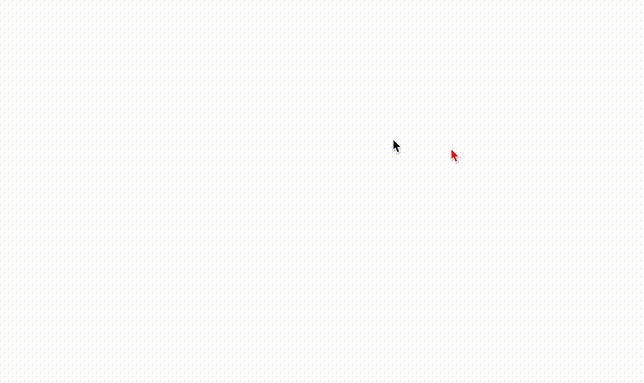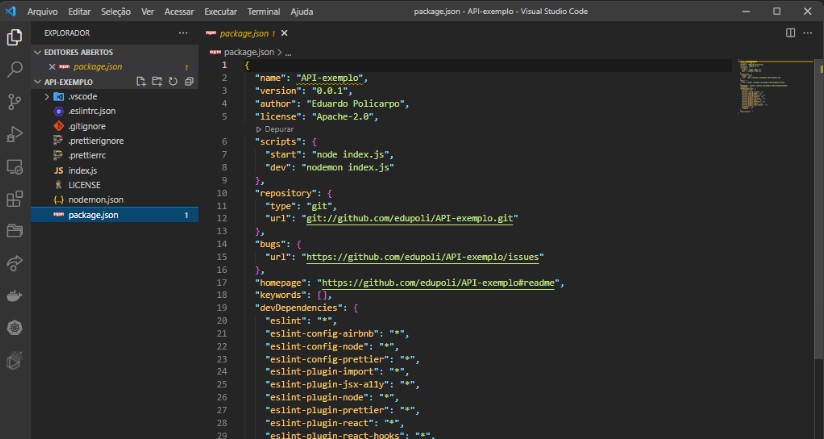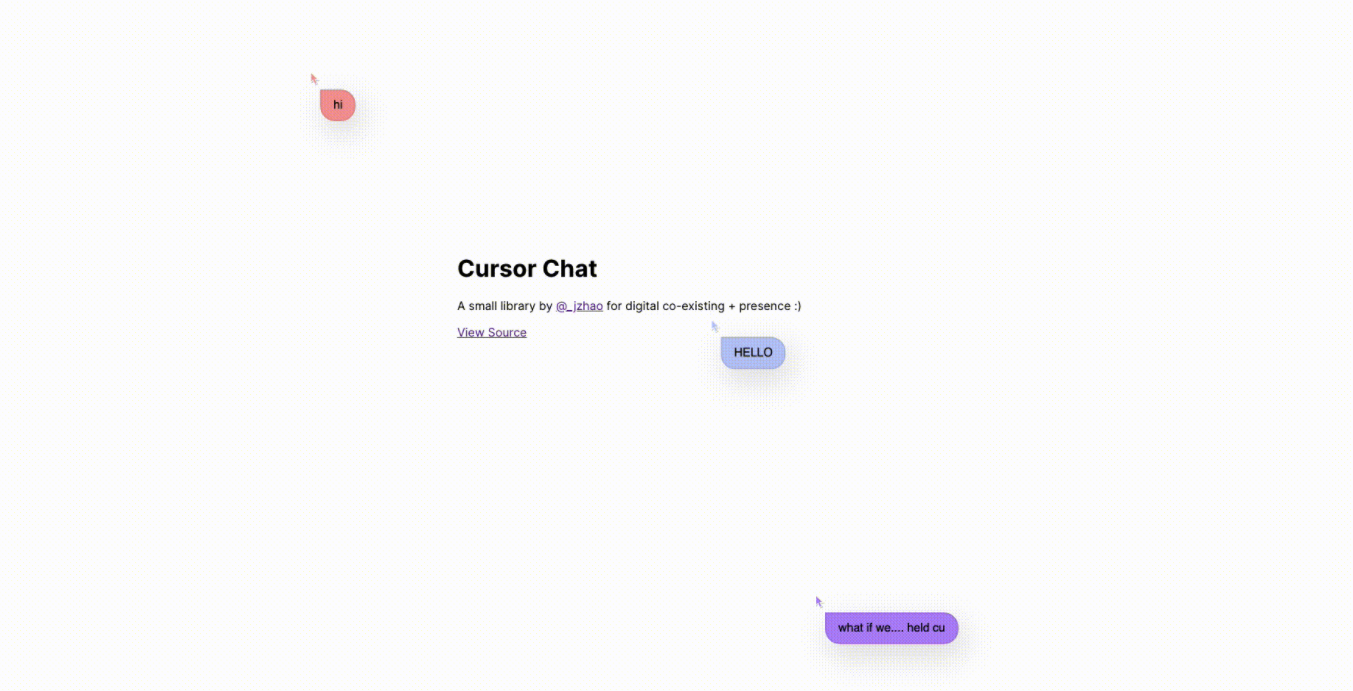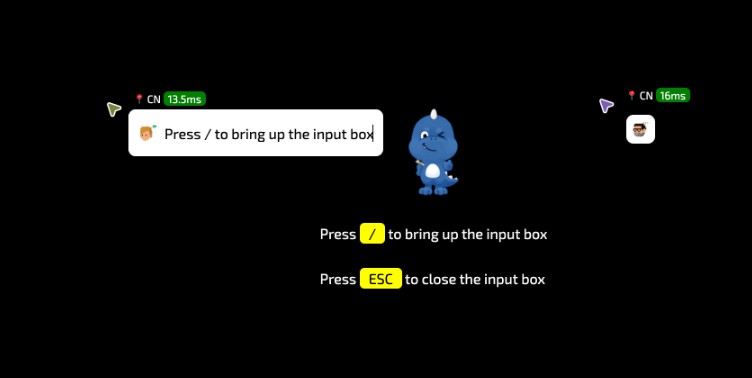perfect-cursors
Perfect interpolation for animated multiplayer cursors. Used in tldraw.
? Love this library? Consider becoming a sponsor.
Installation
yarn add perfect-cursors
# or
npm i perfect-cursors
Introduction
You can use this library to smoothly animate a cursor based on limited information.
Above: We are updating the red cursor’s position once every 80 milliseconds. The perfect-cursors library is being used to correctly animate between these positions.
Animating between points
When implementing a multiplayer app, you will most likely be displaying each user’s cursor location based on the information you receive from a multiplayer service such as Pusher, Liveblocks.
In a perfect world, these updates would occur “in real time”: that is, arriving with zero latency and arriving at the same rate as the user’s monitor.
Above: Updating the cursor instantly.
In the real world, however, services often “throttle” their updates to roughly one update every 50-80 milliseconds.
Updating the cursors’ locations directly will cause cursors to “jump” between points.
Above: Updating the cursor’s once position every 80 milliseconds.
Transitioning between points via CSS can work, however this looks increasingly artificial as the delay increases. Worse, because updates do not come in on an exact interval, some animations will never finish while others will pause between animations.
Above: Transitioning the cursor’s once position every 80 milliseconds.
Smart animating with JavaScript and dynamic durations can be better, however this still looks artificial as the delay increases.
Above: Animating the cursor once position every 80 milliseconds.
For best results, you would animate while interpolating the cursors’ locations based on a set of connected curves (e.g. a “spline”).
Above: Animating the cursor once position every 80 milliseconds using spline interpolation.
In this way, your animations can very closely approximate the actual movement of a cursor. So closely, in fact, that it appears as though the cursor is being updated “in real time” with a “one-update” delay.
Usage
Quick n’ dirty docs.
Usage
To use the library directly, create an instance of the PerfectCursor class and pass it a callback to fire on each animation frame.
import { PerfectCursor } from "perfect-cursors"
const elm = document.getElementById("cursor")
function updateMyCursor(point: number[]) {
elm.style.setProperty(
"transform",
`translate(${point[0]}px, ${point[1]}px)`
)
}
const pc = new PerfectCursor(updateMyCursor)
Use the instance’s addPoint to add a point whenever you have a new one.
pc.addPoint([0, 0])
setTimeout(() => pc.addPoint([100, 100]), 80)
setTimeout(() => pc.addPoint([200, 150]), 160)
Use the dispose method to clean up any intervals.
pc.dispose()
Usage in React
To use the library in React, create a React hook called usePerfectCursor.
// hooks/usePerfectCursor
import { PerfectCursor } from "perfect-cursors"
export function usePerfectCursor(
cb: (point: number[]) => void,
point?: number[]
) {
const [pc] = React.useState(() => new PerfectCursor(cb))
React.useLayoutEffect(() => {
if (point) pc.addPoint(point)
return () => pc.dispose()
// eslint-disable-next-line react-hooks/exhaustive-deps
}, [pc])
const onPointChange = React.useCallback(
(point: number[]) => pc.addPoint(point),
[pc]
)
return onPointChange
}
And then a Cursor component that looks something like this:
// components/Cursor
import * as React from "react"
import { usePerfectCursor } from "../hooks/usePerfectCursors"
export function Cursor({ point }: { point: number[] }) {
const rCursor = React.useRef<SVGSVGElement>(null)
const animateCursor = React.useCallback((point: number[]) => {
const elm = rCursor.current
if (!elm) return
elm.style.setProperty(
"transform",
`translate(${point[0]}px, ${point[1]}px)`
)
}, [])
const onPointMove = usePerfectCursor(animateCursor)
React.useLayoutEffect(() => onPointMove(point), [onPointMove, point])
return (
<svg
ref={rCursor}
style={{
position: "absolute",
top: -15,
left: -15,
width: 35,
height: 35,
}}
xmlns="http://www.w3.org/2000/svg"
viewBox="0 0 35 35"
fill="none"
fillRule="evenodd"
>
<g fill="rgba(0,0,0,.2)" transform="translate(1,1)">
<path d="m12 24.4219v-16.015l11.591 11.619h-6.781l-.411.124z" />
<path d="m21.0845 25.0962-3.605 1.535-4.682-11.089 3.686-1.553z" />
</g>
<g fill="white">
<path d="m12 24.4219v-16.015l11.591 11.619h-6.781l-.411.124z" />
<path d="m21.0845 25.0962-3.605 1.535-4.682-11.089 3.686-1.553z" />
</g>
<g fill={"red"}>
<path d="m19.751 24.4155-1.844.774-3.1-7.374 1.841-.775z" />
<path d="m13 10.814v11.188l2.969-2.866.428-.139h4.768z" />
</g>
</svg>
)
}
When the user’s cursor point changes, pass that information to the Cursor component.
Community
License
This project is licensed under MIT.
If you’re using the library in a commercial product, please consider becoming a sponsor.










